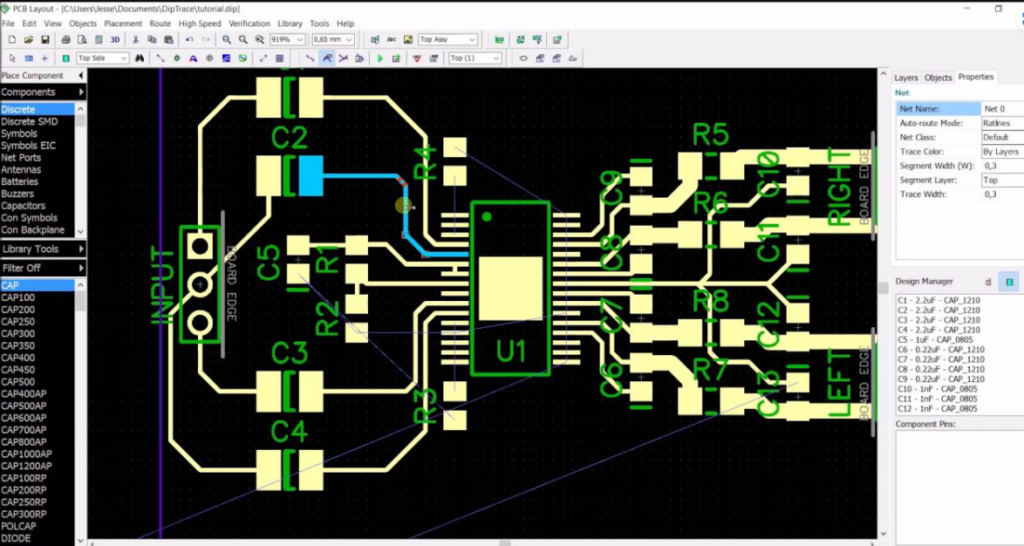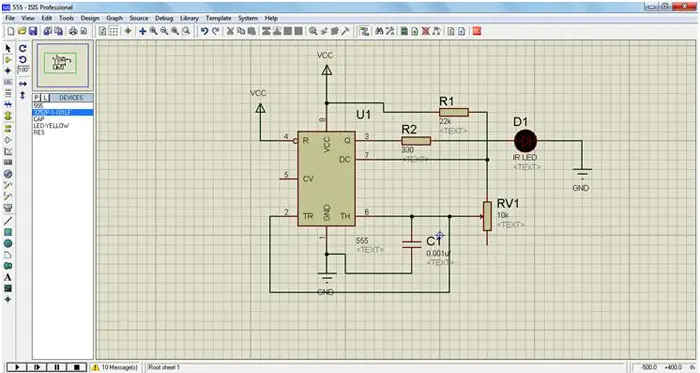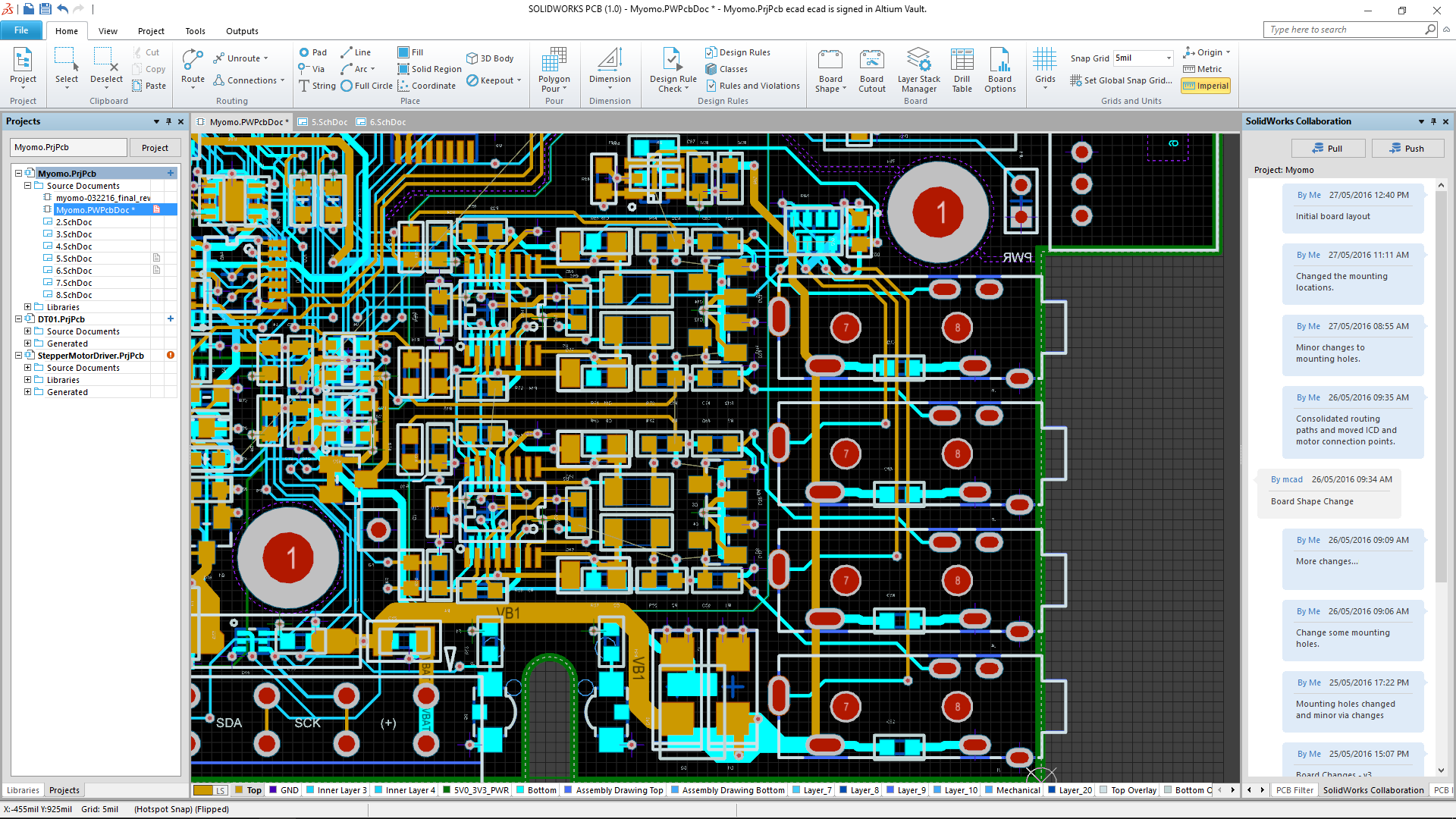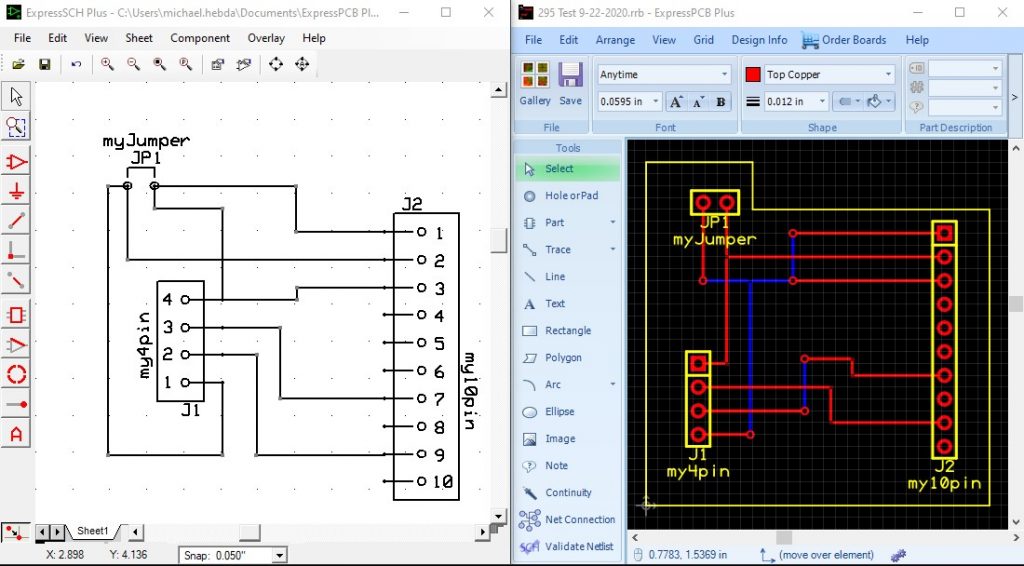
Support Team
Feedback:
support@nextpcb.comPrinted circuit boards (PCBs) are designed with the help of PCB circuit design software. Designing printed circuit boards is made easier with the help of PCB design tools. This article provides an overview of popular PCB circuit design software used worldwide, highlighting their advantages and disadvantages.
In this article,

PCB circuit design software is a specialized tool for creating printed circuit board layouts. These layouts are the foundation of electronic products. The software helps designers plan and optimize the placement of components, routing of electrical connections, and overall board structure. The success of an electronic product relies heavily on the capabilities of the chosen PCB design software.
Choosing the right PCB layout software is crucial for a successful electronic product. Different software options offer varying capabilities, pros, and cons. By carefully selecting the appropriate software for your project, you'll optimize the design process and ensure a high-performing electronic product.
In a world where electronics rule, Printed Circuit Boards (PCBs) are essential. They're the backbone of countless gadgets and devices. Designing these tiny marvels is no small task. Enter PCB design software. A game-changer for the industry. Let’s discuss why we are interested in PCB design software.

A heavyweight in PCB design software, Altium Designer leads the pack. It boasts a user-friendly interface, robust library, and powerful features. Professionals and large companies prefer this software for its top-notch performance. Expect seamless integration with 3D modeling and mechanical CAD. Though pricey, Altium Designer is worth the investment.

Eagle is a popular choice among hobbyists and small businesses. Acquired by Autodesk, it offers a comprehensive set of tools at a competitive price. It's extensive libraries and active community make it a reliable option. Eagle's compatibility with Fusion 360 is an added bonus for mechanical design.

KiCAD is an open-source software offering exceptional value. It's perfect for those starting in PCB design or working on a budget. With a growing community and continuous updates, it competes with paid solutions. KiCAD's 3D viewer and push-and-shove routing are standout features.

A widely used professional software, OrCAD delivers reliability and power. Its extensive set of tools make it suitable for complex projects. OrCAD's simulation and analysis capabilities are notable. However, its learning curve and pricing make it a better fit for experienced designers and larger companies.

PADS caters to the needs of engineers working on complex PCB designs. Its advanced features, like constraint management and interactive routing, streamline the design process. PADS is best suited for mid-sized companies due to its price and capabilities.

DipTrace offers an affordable, yet capable alternative to premium software. Its intuitive interface and learning resources are perfect for beginners. DipTrace shines with its customizable libraries and multi-sheet schematics. Its scalability makes it a solid choice for growing businesses.

CircuitMaker is a free, community-driven software that targets hobbyists and makers. Developed by Altium, it borrows features from its premium sibling. CircuitMaker's cloud-based platform promotes collaboration and sharing of resources. However, it may lack some advanced tools professionals require.

Proteus is a versatile software, that combines PCB design with simulation capabilities. Its real-time simulation and visual debugging set it apart from competitors. Proteus is an excellent choice for educational purposes or small businesses needing an all-in-one solution.

CADSTAR is a powerful, yet affordable option for PCB design. It caters to small and medium-sized companies with its scalable features. CADSTAR's constraint-driven design and customizable toolsets make it an adaptable choice. Its compatibility with enterprise-level solutions allows for seamless expansion.

EasyEDA is a browser-based PCB design software that's free and easy to use. Its extensive library and community support make it a popular choice for hobbyists. EasyEDA's integration with LCSC and JLCPCB simplifies the process from design to production.

Pulsonix is feature-rich software that caters to professionals and small businesses. Its intuitive interface, customizable libraries, and advanced routing tools make it a strong contender. Pulsonix's seamless migration from other software platforms is a unique selling point.

DesignSpark PCB is a free software from RS Components that targets hobbyists and small businesses. Its ease of use, vast libraries, and 3D visualization makes it a solid choice. DesignSpark PCB's integration with DesignSpark Mechanical is beneficial for those needing a complete design solution.

Solidworks PCB bridges the gap between electrical and mechanical design. It offers seamless integration with Solidworks CAD software. Its collaboration tools and powerful features make it ideal for multidisciplinary teams. However, its price and learning curve may not suit hobbyists or smaller businesses.

CircuitStudio is a more affordable alternative to Altium Designer, targeting small businesses and individual designers. Powered by Altium, it includes many features from its premium counterpart. Its ease of use, customizable libraries, and smooth 3D integration make it a reliable choice for those on a budget.

ExpressPCB is a free, lightweight software aimed at beginners and hobbyists. It offers a simple interface and essential design tools. While it lacks advanced features, its compatibility with ExpressPCB's manufacturing services streamlines the design-to-production process. It's an excellent starting point for those new to PCB design.
Let's compare some of the topmost PCB circuit design software in terms of the most used parameters.
| Software | Advantages | Disadvantages | User Type | Pricing |
|---|---|---|---|---|
| Altium Designer | Comprehensive design, strong | Expensive, steep learning curve | Professionals, advanced hobbyists | Contact for pricing |
| Eagle PCB Design | User-friendly, cross-platform | Limited functionality in free version | Beginners, intermediate, startups | Free - $1695 |
| KiCAD | Open-source, cross-platform | Limited features, steeper learning curve | Hobbyists, makers, small businesses | Free |
| OrCAD | Industry standard, powerful | Expensive, complex interface | Professionals, advanced users | Contact for pricing |
| PADS | Robust design, good simulation | Expensive, steep learning curve | Professionals, advanced users | Contact for pricing |
| DipTrace | Intuitive interface, affordable | Limited features, smaller library | Beginners, intermediate users | Free - $1195 |
| CircuitMaker | Free, user-friendly, collaborative | Limited features, requires internet | Hobbyists, makers, students | Free |
| Proteus | Good simulation, affordable | Limited features, lacks advanced routing | Intermediate, educators, students | Contact for pricing |
| CADSTAR | Scalable, high-speed designs | Steep learning curve, expensive | Professionals, advanced users | Contact for pricing |
| EasyEDA | Cloud-based, easy to use, free | Limited features, requires internet | Beginners, hobbyists, makers | Free - $9.9/month |
| Pulsonix | Easy to learn, powerful | Limited features, expensive | Intermediate, professional users | Contact for pricing |
| DesignSpark PCB | Free, easy to use | Limited features, lacks advanced routing | Beginners, hobbyists, makers | Free |
| Solidworks PCB | Seamless integration, collaboration | Expensive, steep learning curve | Professionals, advanced users | Contact for pricing |
| CircuitStudio | Affordable, based on Altium | Limited features, smaller library | Intermediate, small businesses | Contact for pricing |
| ExpressPCB | Free, easy to use | Limited features, proprietary format | Beginners, hobbyists, makers | Free |
In PCB design, the choice between online and offline software is critical. Below are some of the comparative points among both:
Online software wins the accessibility round. Access your designs from any device, anywhere, anytime. Internet is all you need. Offline software, on the other hand, requires installation on specific devices. Portability is limited.
Offline software takes the trophy in performance. Installed on your computer, it relies on your hardware resources. Fast and powerful. Online software, however, can be sluggish. Your work pace depends on the internet connection and server capabilities.
The collaboration crown goes to online software. Team members can work on designs simultaneously. Real-time updates and version control are the norms. Offline software lacks these perks. File sharing and version tracking can be a hassle.
Offline software often boasts more advanced features. Rich toolsets and comprehensive functionality. Online software may lag in this department. However, for beginners or simple projects, online tools may suffice.
Online software often comes with a subscription-based model. Monthly or annual fees. Offline software is typically a one-time purchase. While it may seem pricey upfront, it can save money in the long run. Free options exist in both categories but with limited features.
Online software gets the edge in updates and maintenance. Automatic updates ensure you're always using the latest version. No manual intervention is needed. Offline software requires manual updates, which can be time-consuming.
Thus, online and offline PCB software each has its strengths and weaknesses. Consider your needs, resources, and project complexity. If you value accessibility, collaboration, and ease of use, online software is your champion. If performance, security, and advanced features matter most, offline software is the way to go. Choose wisely, and let your PCB design journey begin.
Thus, PCB circuit design software helps the engineering model PCB for electronic devices. They include the tools that could help the organizations to design, manufacture and test the high and best quality PCBs. Engineers and manufacturers using this PCB circuit design software can produce the more complex PCB faster with a high degree of accuracy. These tools can also test the failed models of PCB and can also integrate with other software.
Still, need help? Contact Us: support@nextpcb.com
Need a PCB or PCBA quote? Quote now